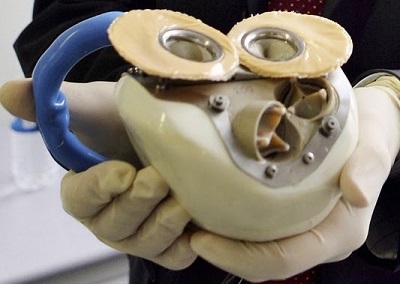World’s First Artificial Heart Transplanted Successfully
Share




Surgeons perform pioneering new surgery to give man a new artificial heart.
The wait could soon be over for hundreds of thousands of people on heart transplant waiting lists as the medical community celebrates the first successful implantation of an artificial heart into a 75-year-old patient in Paris, paving the way for many long term robotic substitutes.
The procedure was performed at France's Georges Pompidou European Hospital, and according to the surgical team, the operation went smoothly, and the heart is providing blood flow as expected. The patient is reportedly in good condition, and expected to be up on his feet shortly.
The artificial heart was produced by the French biomedical firm CARMAT and is considered a revolution in the artificial organs industry.

Unlike previous artificial hearts, created mainly for temporary use, the design by CARMAT is long term, intended to replace a real heart for up to five years.
It is completely artificial and self regulating, containing sensors that adapt the blood flow to the patient moves, mimicking the human heart in ways previous medical efforts never did.
By employing flexible, hydraulically-operated chambers that squeeze, rather than pump, the blood into the circulatory system, the CARMAT heart is much less harsh than other artificial devices that use mechanical pumps, which can damage blood cells.
It uses a range of biomaterials, including bovine tissue on surfaces that come into contact with human blood, to reduce the likelihood of the body rejecting it and also to reduce the possibility of blood clots seen with other devices made of plastic materials.
Developed with the help of engineers from the European Aeronautic Defense and Space Company (EADS), the heart is powered by external lithium-ion batteries and weighs 900 g—almost three times as much as an average healthy human heart, which is the main drawback of the current design.
A large artificial heart can only fit around 86% of men and about 20% of women. Hence, the Company is currently working on producing a smaller, lighter version of the device that can fit into more patients.
This new device could help thousands of people suffering from heart failure, who could spend years anxiously waiting for a suitable donor match, or eventually die waiting. For every 10 patients transplanted with a new heart, nearly 4 died waiting and another 19 are still waiting.
Reference
Eurotransplant, 2010 Annual Report.